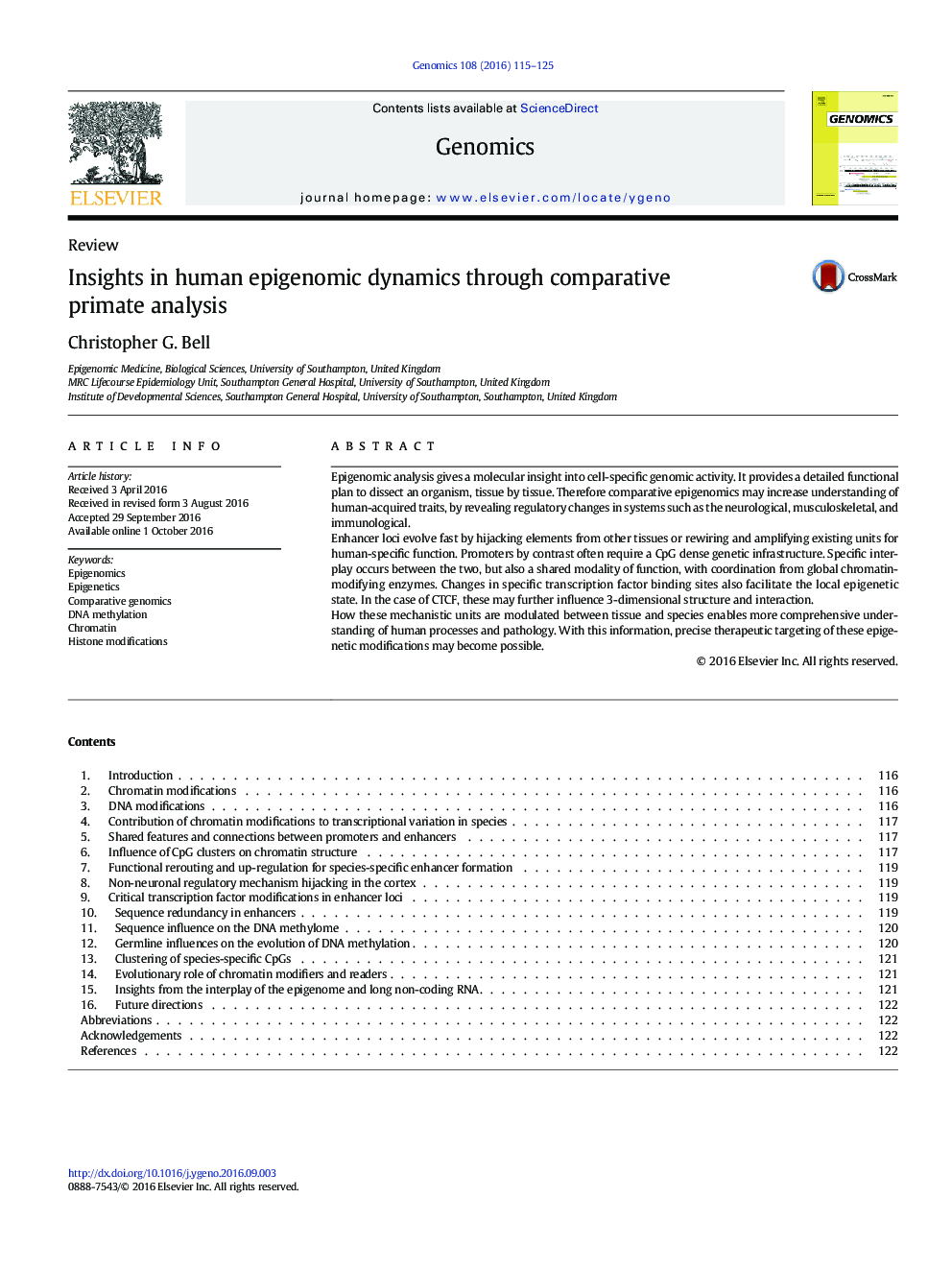| کد مقاله | کد نشریه | سال انتشار | مقاله انگلیسی | نسخه تمام متن |
|---|---|---|---|---|
| 5590115 | 1570097 | 2016 | 11 صفحه PDF | دانلود رایگان |
- Epigenomic analysis reveals functional insights to cell-specific genomic activity.
- Comparative primate epigenomics may give molecular understanding of human acquired traits.
- Human-specific enhancers commonly redeploy existing regulatory elements.
- Chromatin modifying enzymes may be important in evolution.
- Transcription factors play a significant role in defining local epigenetic states.
Epigenomic analysis gives a molecular insight into cell-specific genomic activity. It provides a detailed functional plan to dissect an organism, tissue by tissue. Therefore comparative epigenomics may increase understanding of human-acquired traits, by revealing regulatory changes in systems such as the neurological, musculoskeletal, and immunological.Enhancer loci evolve fast by hijacking elements from other tissues or rewiring and amplifying existing units for human-specific function. Promoters by contrast often require a CpG dense genetic infrastructure. Specific interplay occurs between the two, but also a shared modality of function, with coordination from global chromatin-modifying enzymes. Changes in specific transcription factor binding sites also facilitate the local epigenetic state. In the case of CTCF, these may further influence 3-dimensional structure and interaction.How these mechanistic units are modulated between tissue and species enables more comprehensive understanding of human processes and pathology. With this information, precise therapeutic targeting of these epigenetic modifications may become possible.
Journal: Genomics - Volume 108, Issues 3â4, October 2016, Pages 115-125
